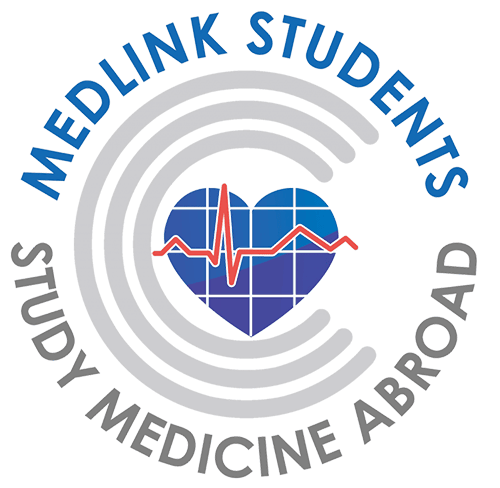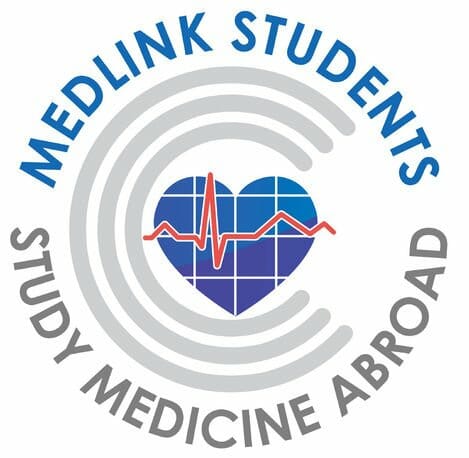Q&A: Transferring From the US to Medical Schools in Europe

There has been a consistently increasing trend of US medical students choosing to study medicine abroad in Europe, and for good reason. Not only can you get high-quality medical education at a fraction of the cost, but you also get to experience a new culture in a fresh and exciting place.
The best part is that there are many medical schools in Europe that specifically cater to US students and have courses dedicated to preparing you to return home and take the United States Medical Licensing Exam (USMLE),
Naturally, along with 1st-year applications, there’s a growing interest in US students who wish to transfer to a European medical university to continue their educational journey. We’ve received hundreds of inquiries on the topic, so that’s why we decided to address them in this blog.
We’ve converted the most common queries into an article to serve as your go-to place if you have any questions about transferring from the US to medical schools in Europe.
Let’s kick off with questions about the transfer process itself:
Q&A: How to Transfer to a European Medical School as a US Student
What are the requirements for transferring to a European medical university as a US student?
Regarding transfers, the same rules apply to everyone. Here are the most important criteria for transferring:
- You need to have completed at least 1 academic year
- You need to have your course transcripts
The most important thing to understand is that in order to transfer to an upper or even the same year, you will need to have covered the required coursework according to your new university’s curriculum.
For example, you want to transfer to the 3rd year at the University of East Sarajevo, but you see that they’ve studied Immunology in the 2nd year, whereas you still haven’t. No reputable medical school can allow a student to graduate without going through the full curriculum. So, in this case, you will either need to transfer into the 2nd year or sign up for additional classes to cover the courses that you’re missing.
You can read our blogs Complete Guide for Medical School Transfers and Understanding Medical School Transfers for Realistic Expectations for a complete picture on the topic.
Will my credits from a US medical school transfer to a European medical school?
Credit transfer rules vary from university to university. However, the general rule of thumb is that as long as you have covered the proper coursework, you will get admitted into the year you want.
Generally, the medical school you want to transfer to will review your transcripts and compare the coursework you have completed with their own curriculum. Then, a committee will determine which credits can be transferred and if any additional courses will need to be taken.
How does the application process for transferring work?
The process for transferring typically includes submitting your transcripts and may also require submitting a personal statement, a letter of recommendation, and proof of English proficiency (for non-native speakers).
Some medical schools in Europe may even require participating in an interview or taking an entrance exam before you can transfer, but generally, that’s not the case.
For example, the University of Georgia and the Caucasus International University in Tbilisi, Georgia, both do not require participating in entrance exams when transferring.
Can I leverage extracurricular activities and volunteering experiences common in the US for transfer to a European med school?
Yes, you absolutely can and should leverage your extracurricular and volunteering activities. These experiences are highly valued as they demonstrate your commitment to the medical field while giving you practical insight into the profession.
You will be able to show that you’ve taken an active approach to developing your skills and knowledge prior to or during your medical education. Additionally, this will greatly enhance your personal statement and will leave a positive and lasting impression on interviews.
Although this will make it more likely that you get accepted for a transfer, you will still need to have covered the proper coursework to be transferred to the year you want.
Q&A: Differences Between Medical Programmes and Curricula in European Medical Schools and US ones
What are the main differences between medical curricula in Europe and the US?
The main differences between medical curricula in Europe and the US are:
- Length: studying medicine in Europe typically takes 6 years, while in the US, it’s divided into 4 years of premedical education followed by 4 years of medical school.
- Type of entry: European medical programmes are typically undergraduate courses that don’t require prior higher education, whereas US MD programmes are graduate entry pathways into medicine.
- Teaching methods: Medical schools in Europe often opt for problem-based learning, while in the US, you can typically expect lecture-based learning.
Another major difference is:
Will the hands-on clinical experience in European programmes differ from what I'd expect in the US?
The hands-on clinical experience in European medical programmes can differ in several ways from the US.
The first one is that healthcare systems in Europe are predominantly public, whereas they’re usually private in the US. This means that you will interact with a far wider range of patient cases while carrying out your clinical training in Europe.
Secondly, in Europe many universities place a strong emphasis on practical training and have it integrated into the curriculum, while it’s usually reserved for the final 2 years in the US. This includes early clinical exposure and some med schools, like the University of Novi Sad in Serbia have clinical training as early as the 2nd year.
Additionally, the structure of clinical rotations can be different. In the US, clinical training is typically distinctly separated into clerkship years, while in Europe, it’s integrated into the final years of the curriculum.
How does the emphasis on research in European medical schools compare to US programmes?
The emphasis on research can vary significantly between European and US medical schools:
| Medical School Location | US | Europe |
| Research opportunities | Typically put a strong emphasis on research | Research opportunities are commonly available but usually not required |
| Integrated research programmes | Research is usually part of the curriculum in the US | Some med schools incorporate research into the curriculum, especially in the clinical years of study |
| Specialisation | Usually post-graduation | Students often have the opportunity to choose specialisation courses earlier in their education. |
A great example of a European university that highly values research is the Ilia State University in Tbilisi, Georgia. It is one of the largest universities in Georgia, which constantly invests in advancing the field of medicine through research.
Are there specific European medical programmes known for teaching a US-based curriculum?
Yes, several European medical programmes are designed to align closely with the US medical education system. These programmes cater to international students, particularly those from the US, and often offer curricula that prepare students for US medical licensing exams. These courses often have partnerships with US institutions and include components such as USMLE preparation and clinical rotations in the US.
The Semmelweis University in Hungary is known for its English-language medical programme that prepares students for medical practice in the US and other countries. The Yerevan Haybusak University in Armenia also has notable partnerships with educational establishments throughout the USA.
Are there European medical schools that will prepare me for the USMLE?
Yes, several European medical schools explicitly prepare students for the USMLE (United States Medical Licensing Examination). Here are a couple of prestigious European medical schools that provide courses and resources aimed at preparing students for these exams:
- Charles University in the Czech Republic
- Georgian American University in Georgia
These schools often have dedicated support for students aiming to practise in the US, including access to study materials, practice exams, and guidance on the application process for residency programmes.
Q&A: Residency Training and Career Options After Graduating From a European Medical School
Can I return to the US to practise medicine after graduating from a European medical school? What steps are involved?
Yes, absolutely. You can return to the US to practise medicine after graduating from a European medical school, but you must follow several steps:
- You need to pass the United States Medical Licensing Examination (USMLE) Step 1, Step 2 CK (Clinical Knowledge), and Step 3 CCS (Clinical Skills)
- You have to obtain certification from the Educational Commission for Foreign Medical Graduates (ECFMG).
- Then, you will have the opportunity to apply for residency positions through the National Resident Matching Programme (NRMP). This involves submitting your application, including your USMLE scores, through the Electronic Residency Application Service (ERAS).
- Finally, you have to complete a residency programme in the US, which typically lasts between 3 to 7 years depending on the speciality.
How does the competitiveness of US residency programmes compare to residency opportunities in Europe for US graduates?
US residency programmes are highly competitive, and applicants need strong academic records, high USMLE scores, and extensive clinical experience to secure positions. In contrast, residency opportunities in Europe for US graduates vary depending on the country and speciality, but they are considered to be less competitive generally.
In general, if you’ve been a diligent student and you’ve graduated from an accredited and internationally recognised medical school, you shouldn’t have problems securing residency training in either the US or Europe.
Does the shorter duration of European medical degrees impact residency options?
The shorter duration of European medical degrees does not negatively impact residency options in the US because:
- European universities provide a comprehensive medical education. Not only will you build a strong theoretical foundation, but early clinical exposure is often seen as a huge advantage.
- Many European medical schools are recognised by the ECFMG, which is essential for US residency applications.
- European medical graduates perform well in the US residency match, especially if they have strong USMLE scores, relevant clinical experience, and good letters of recommendation.
While there may be differences in the length and structure of medical education, the critical factors for residency placement in the US are typically USMLE scores, clinical experience, and overall academic performance.
Can US students practise medicine in Europe after graduation, and what are the legal requirements?
Yes, US students can practise medicine in Europe after graduation. The legal requirements vary by country, but graduates generally need to obtain a medical licence by passing a local medical licensing exam. Some countries may require additional residency training and the ability to demonstrate proficiency in the local language.
Additionally, thanks to the Bologna Process, when you graduate from an accredited European medical school, your degree will be recognised throughout the European Union (EU) and the European Economic Area (EEA). This opens additional opportunities throughout the continent for US graduates who choose to study medicine abroad in Europe.
How are European medical degrees viewed by employers and residency programmes in the US?
European medical degrees are generally well-regarded by US employers and residency programmes, especially when their degrees are from accredited and internationally recognised universities.
Graduates must always pass the USMLE exams and get ECFMG-certified anyway, which guarantees that their education meets the standards required to practise in the US. In fact, many US residency programmes value the diverse experience and global perspective that graduates of European medical schools bring,
Q&A: Tuition Fees & Living Costs
Compared to the high cost of US medical schools, how do tuition fees and living expenses in Europe differ by country?
European medical schools often offer significantly lower tuition fees compared to US medical schools. We’ve gone in-depth on this topic in this blog: Comparing The Costs of Studying Medicine: UK, USA, Europe, and the Caribbean.
Just for example, one of the best universities in Romania - the Oradea Medical University costs just €6,000 or about $6,500 per year.
What are the visa requirements for US students studying medicine in Europe, and how long does the process typically take?
Visa requirements for US students vary by country but generally include:
- Completing a student visa application form.
- Acceptance letter from a recognised university.
- Evidence of sufficient funds to cover tuition and living expenses.
- Proof of health insurance coverage.
- A valid passport.
Medlink Students provides comprehensive support when it comes to securing your visa to study medicine. Sign up for a free consultation with one of our expert advisors to learn more about our services and how we can ensure a smooth and easy transition into studying medicine in Europe.
Is on-campus housing a common option in European medical schools, and how does it compare to US options?
On-campus housing is available at many European medical schools but generally depends on the university. When available, it is often very affordable and in a close location to the university.
With the different healthcare systems in Europe, will I have access to affordable health insurance as a medical student?
Yes, affordable health insurance is generally accessible for medical students in Europe and many universities even cover the cost for it.
Q&A: General Questions About Studying Medicine in Europe
How will the cultural differences between the US and European university systems impact my learning experience?:
Studying in Europe provides a rich cultural experience, with opportunities to learn new languages, understand different healthcare systems, and interact with a diverse student body. This can broaden your perspective, enhance your adaptability and greatly prepare you for the globalised nature of the medical profession.
Is there support available for US students adjusting to life and studying medicine in Europe?
European medical schools are dedicated to creating an inclusive environment and have several support systems that are available for international students. US students can take advantage of these to adjust to life and study medicine in Europe.
Many medical universities have:
- International offices that are dedicated to assisting foreign students with administrative tasks, such as visa applications, residency permits, and enrollment.
- Orientation programmes that include campus tours, cultural adjustment workshops, and sessions on academic expectations and resources.
- Student associations and clubs can provide a community and support network. These groups often organise social events, study groups, and cultural excursions.
- Language support for non-English speaking countries to help international students improve their language skills.
- Counselling services and mental health services to support students in their academic and personal challenges
What is the application timeline for European medical schools, and how does it align with US graduation dates?
The application timeline for European medical schools typically starts in the spring and summer, with deadlines often extending into late summer or early fall. This aligns well with US graduation dates and allows students to apply shortly after completing high school or their undergraduate studies. However, specific dates can vary by country and university, so it's essential to check the deadlines or consult one of our expert advisors.
Additionally, there are many universities who have Spring intakes, which may align better with your plans. Some of the top medical schools in Europe with Spring intakes include the European University in Georgia, Riga Stradins University in Latvia, and the Medical University of Silesia in Poland.
Overall, Europe has a wide array of high-quality medical universities, which gives US students the flexibility to choose one that aligns with their goals, plans, and ambitions.
How is the latest medical technology integrated into European medical curricula compared to US schools?
All of the reputable medical schools in Europe incorporate the latest technology into their curriculum, including modern classrooms, high-tech laboratories, dedicated simulation centres, and comprehensive online study resources.
Some universities, like the Tbilisi Medical Academy in Georgia, and University of Targu Mures, Hamburg Campus are even equipped with the Anatomage table - the most technologically advanced system for anatomy visualisation.
Are there opportunities for US medical students in Europe to engage in international rotations or exchanges back in the US or other countries?
Yes, many European medical schools offer opportunities for international rotations and exchanges. Programmes like Erasmus+ in Europe facilitate international student exchanges within the EU, and some medical schools have partnerships with US universities and institutions that allow students to complete clinical rotations or electives in the US.
Are there medical schools in Europe that offer courses entirely in English, or will I need to learn a new language?
Yes, there are medical schools in Europe that offer courses entirely in English.
Medlink Students work with 100+ of the best medical universities in Europe that offer medicine programmes in English. We are a team of international doctors with 12+ years of helping students just like you find the perfect destination to get high-quality medical education.
We offer free consultations with our expert academic advisors, who can guide you toward choosing the perfect medical school that can kickstart your educational journey. The best part is that we have one of the best admission teams in Europe that can take care of your transfer process in its entirety.
2 comments on “Q&A: Transferring From the US to Medical Schools in Europe”
Leave a Reply

About Medlink Students
Leading international recruitment company for medical students in Europe. British Council Certified Agents. 10+ years of experience and more than 10,000 students advised.









Will all my finished credits be transferred?
Hi Alex,
The transfer of credits depends on the specific requirements of the European medical school you are interested in. Each university will review your transcripts and compare your completed coursework with their curriculum. While many credits may transfer, you might need to take additional courses to meet the new university's requirements.
For detailed guidance tailored to your situation, we recommend scheduling a free consultation with one of our expert advisors.